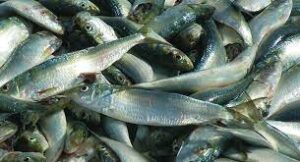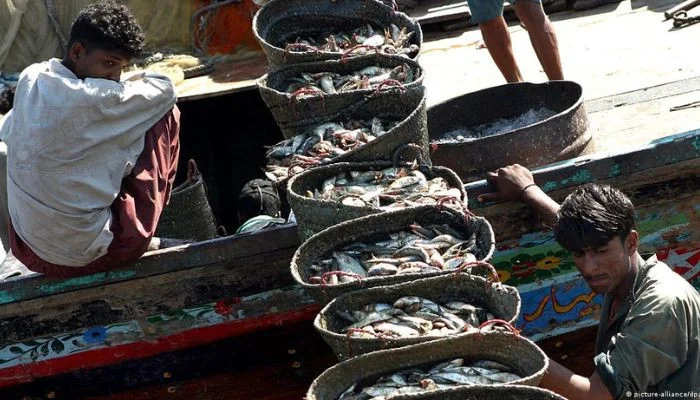According to a World Wide Fund for Nature (WWF) official, almost 90% of the fish eaten in Pakistan is tainted, putrefied, and unfit for human consumption.
The evaluation was presented during a seminar titled “Blue Economy: An Avenue for Development in Pakistan” hosted at the Pakistan Institute of International Affairs by Muhammad Moazzam Khan, former director general of the marine fisheries department and technical adviser on marine fisheries for WWF. Khan maintained that a significant portion of the fish sold in stores and on street vendors’ carts was unfit for human consumption.
The seminar’s presenters discussed a range of topics, including Pakistan’s blue economy, difficulties it encounters, problems with marine fishing, and the socioeconomic advancement of coastal areas. Khan emphasized that fish are particularly delicate protein sources and putrefy very quickly if not immediately iced or refrigerated. Fish are frequently stored at room temperature, but they are also kept at temperatures exceeding 40 degrees Celsius. Vendors sprinkle water on the fish to keep them looking fresh and prevent decomposition. But people continue to buy them even though they are already unfit for ingestion, which causes illness.

To keep fish from spoiling, he advised storing it between 0 and 5 degrees Celsius. The WWF member noted that only around 10% of Pakistan’s product was exported, with the remainder degraded or ruined because most boats lacked adequate deep freezers and other storage facilities for the catch. He noted that although the volume of seafood exports is rising, we are still unable to meet a significant goal due to a variety of issues, such as inadequate processing facilities and poor quality controls.
Khan criticized the fact that Pakistan’s fisheries industry was still totally unregulated and that the size of the fleet had grown uncontrollably much. According to a survey conducted in 2016, the total fleet size consisted of 11,500 vessels, but it was now projected to have exceeded 20,000. To conserve the fish resource, he added, the fleet size needed to be reduced to 5,000 to 6,000 vessels.

Vice Admiral (retired) Asif Humayun outlined Pakistan’s new frontier in the blue economy. In the conclusion, he offered a plan of action for realizing the full economic potential of the sea and marine resources. There are three commercial ports in Pakistan, according to him, and Port Qasim has become the largest, handling 52% of all cargo and earning over Rs90 billion annually.
The Karachi Port Trust had expanded its capacity, according to the retired navy officer, but because of a massive debt load and transit challenges within Karachi, its profitability had stagnated. Gwadar is a port for the future, according to Humayun, who also noted that although it handled fewer than 80,000 tons of cargo annually, it had a significant amount of potential for transshipment, bunkering, ship maintenance, and other services.


